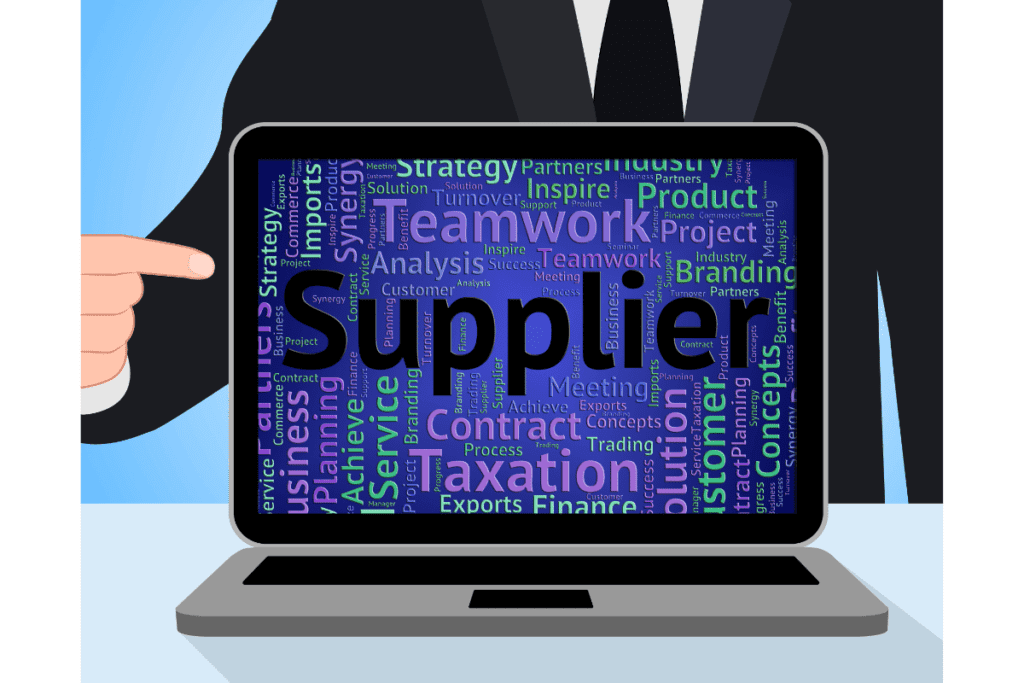Mastering Vendor Scorecards for Optimal Supplier Performance
When it comes to evaluating the performance of your suppliers, it’s essential to have a structured approach in place. One method that can help you achieve this is by creating effective supplier scorecards. In this step-by-step guide, we will explore what a vendor scorecard is, why it’s important, and how to effectively use it to assess supplier performance. By following these best practices, you can enhance your vendor management process and ensure the success of your supply chain.
What is a Vendor Scorecard and Why is it Important?
Definition and Purpose of a Vendor Scorecard
A vendor scorecard is a tool used to measure and evaluate the performance of suppliers based on predefined metrics. It provides a way to assess various aspects of the vendor’s performance, such as delivery times, product quality, and customer service. The scorecard serves as a communication tool between the buyer and the vendor, allowing both parties to have a clear understanding of the supplier’s strengths and areas for improvement.
Benefits of Using a Vendor Scorecard
There are several benefits to using a vendor scorecard. Firstly, it helps to establish clear expectations and standards for suppliers, ensuring that they understand what is required of them. Secondly, it provides an objective and consistent evaluation of vendor performance, allowing for fair comparisons between different suppliers. Additionally, it enables proactive monitoring and identification of potential issues, enabling you to take timely corrective actions. Overall, a vendor scorecard promotes transparency, accountability, and continuous improvement in the supply chain.
How Does a Vendor Scorecard Help in Evaluating Supplier Performance?
A vendor scorecard simplifies the evaluation process by breaking down supplier performance into measurable metrics. These metrics, known as key performance indicators (KPIs), allow you to assess different aspects of supplier performance, such as on-time delivery, product quality, and responsiveness. By assigning weights and targets to each KPI, you can prioritize certain performance areas and set expectations for suppliers. Regularly tracking and analyzing the performance data enables you to identify trends, address issues, and work collaboratively with vendors to improve their performance.
Best Practices for Creating a Vendor Scorecard
Identifying
Key Performance Indicators (KPIs)
The first step in creating a vendor scorecard is to identify the key performance indicators that are relevant to your business and industry. These can include metrics related to quality, delivery, cost, customer satisfaction, and sustainability, among others. It’s important to choose KPIs that align with your business objectives and priorities, as well as those that vendors have control over.
Designing the Scorecard Template
Once you have identified the KPIs, the next step is to design the scorecard template. This template should be clear, easy to understand, and provide sufficient space to record performance data. It should include the supplier’s name, contact information, and any specific requirements or expectations. You may also consider using a scorecard management system to automate the data collection and analysis process.
The essential elements of a scorecard are:
1. Goals and objectives
A scorecard should clearly define the goals and objectives that need to be achieved. This provides a clear direction for the organization or individual using the scorecard.
2. Key performance indicators (KPIs)
KPIs are the metrics that measure progress towards achieving the goals. These metrics should align with the goals and objectives and provide meaningful insights into performance.
3. Targets
The scorecard should include specific targets or benchmarks that need to be met for each KPI. These targets help to gauge performance and provide a basis for improvement.
4. Data collection and measurement
The scorecard should outline the process for collecting and measuring the data needed to track performance against the KPIs. This may involve data sources, data collection methods, and frequency of data tracking.
5. Reporting and visualization
The scorecard should include a format for reporting and visualizing the performance data. This may involve graphs, charts, or other visual representations that make it easier to understand and interpret the data.
6. Accountability and responsibility
The scorecard should clearly define who is responsible for tracking and reporting on the performance data. This ensures that there is accountability for monitoring progress and taking necessary actions to achieve the goals.
7. Action plans
The scorecard should include specific action plans or strategies for improving performance if the targets are not met. This helps to identify areas that need attention and provides a roadmap for improvement.
8. Review and feedback
The scorecard should outline a process for reviewing the performance data and providing feedback. This may involve regular meetings or discussions to analyze the data, identify trends or patterns, and make necessary adjustments to the goals or action plans.
9. Alignment with strategy
The scorecard should align with the overall strategy of the organization or individual. It should reflect the priorities and desired outcomes outlined in the strategic plan.
10. Continuous improvement
The scorecard should promote a culture of continuous improvement by identifying areas for enhancement and setting new targets based on past performance. This ensures that the scorecard evolves and remains relevant over time.
Setting Performance Metrics and Targets
After designing the scorecard template, you need to set performance metrics and targets for each KPI. These metrics should be realistic, measurable, and aligned with your desired outcomes. Targets can be set based on industry benchmarks, historical performance, or negotiation with the vendor. It’s important to communicate these targets to the supplier and ensure that they understand the expectations.
Typical KPIs used to monitor and manage a vendors performance are:
1. Delivery performance
Ability to meet agreed-upon delivery timelines for products or services. It measures the percentage of on-time deliveries and allows for monitoring and managing any delays or issues.
2. Quality performance
Quality of the vendor’s products or services. It may include metrics such as the number of defects, customer satisfaction ratings, or adherence to quality standards. It helps in identifying any issues and working on improvements.
3. Cost performance
Cost effectiveness. It measures factors such as price competitiveness, adherence to budget, and value for money. It helps in identifying whether the vendor is providing products or services at a reasonable cost.
4. Relationship management
Maintain a positive and collaborative relationship. It may include metrics such as responsiveness, communication, and issue resolution. This KPI helps in monitoring and managing the vendor’s overall performance and maintaining a good working relationship.
5. Compliance and contract adherence
Compliance with contractual obligations, legal requirements, and any specific regulations. It helps in monitoring and managing the vendor’s adherence to terms and conditions, ensuring compliance with relevant laws, and mitigating any risks or non-compliance issues.
6. Innovation and continuous improvement
Ability to bring innovative solutions, ideas, or improvements. It measures factors such as the number of new ideas or suggestions, implementation of process enhancements, or adoption of industry best practices. This KPI helps in identifying vendors who are proactive in driving innovation and continuous improvement.
7. Stability and reliability
Stability and reliability as a business partner. It may include metrics such as financial stability, business continuity plans, or performance in critical situations. It helps in monitoring and managing any risks associated with relying on the vendor’s products or services.
8. Ethical and sustainability practices
Adherence to ethical business practices and sustainability initiatives. It may measure factors such as compliance with labor laws, environmental impact, or social responsibility efforts. It helps in monitoring and managing the vendor’s commitment to ethical and sustainable business practices.
How to Use a Vendor Scorecard Effectively

Regularly Track and Update Performance Data
One of the key aspects of using a vendor scorecard effectively is to regularly track and update the performance data. This involves collecting data from various sources, such as purchase orders, quality reports, and customer feedback, and inputting it into the scorecard. By keeping the data up-to-date, you can ensure that you have accurate and reliable information for evaluating supplier performance.
Quarterly Business Reviews (QBRs) are a good way to keep open communication with the vendors and facilitate a proactive approach to ongoing monitoring of the relationship. QBRs provide an opportunity for both the company and the vendor to discuss the current state of the relationship and address any issues or concerns. The regular cadence of these meetings ensures that both parties are on the same page and have a clear understanding of expectations and goals.
Through QBRs, the company can provide feedback on the vendor’s performance, discuss any challenges or obstacles faced, and identify areas for improvement. This creates a proactive approach to addressing potential problems and allows for effective collaboration to overcome any issues.
Additionally, QBRs allow the vendor to share updates on their products or services, showcase their achievements, and highlight any new initiatives or offerings that could benefit the company. This promotes open communication and fosters a stronger partnership between the two parties.
Overall, QBRs help build trust, transparency, and accountability in the vendor relationship. By regularly monitoring the relationship and addressing any concerns or opportunities through these reviews, the company can maximize the value they receive from the vendor and ensure a successful long-term partnership.
Measure Vendor Performance Over Time
In addition to tracking performance data, it’s essential to measure vendor performance over time. This means analyzing the trends and patterns in the performance data to identify areas of improvement or decline. By monitoring performance over time, you can proactively address potential issues and take corrective actions to maintain a healthy vendor relationship.
Utilize Effective Supplier Scorecards for Vendor Management and Improvement
The vendor scorecard should not only be used for assessing performance but also for vendor management and improvement. Regularly reviewing the scorecard with suppliers provides an opportunity to discuss strengths, weaknesses, and areas for improvement. This dialogue helps to strengthen the relationship, align expectations, and work collaboratively to enhance performance. The scorecard should be seen as a tool for continuous improvement, both for the vendor and the buyer.
Additionally, the scorecard can be used to identify additional contract terms when it’s time to renew the contract. By reviewing the scorecard and assessing the performance and satisfaction levels of different aspects of the contract, both parties can identify areas that need improvement or modification.
For example, if the scorecard indicates that there have been frequent delays in contract deliverables, the parties can discuss and negotiate stricter deadlines in the renewed contract. Similarly, if the scorecard shows that customer support has been unsatisfactory, the contract can be updated to include provisions for improved support and response times.
Furthermore, the scorecard can also help identify any new contractual requirements that may arise during the term of the agreement. As businesses and industries evolve, new needs and demands may emerge that were not initially addressed in the contract. By regularly reviewing and updating the scorecard, both parties can stay informed about changing requirements and work together to incorporate them into the renewed contract.
In summary, using a scorecard to evaluate and monitor contract performance can not only help identify areas for improvement during the term of the agreement but also assist in identifying additional contract terms when it comes time for renewal. This ongoing evaluation and adjustment process can contribute to a more effective and mutually beneficial contractual relationship between the parties involved.
Supplier Relationship and Communication

A strong supplier relationship is critical to the success of your supply chain. Effective supplier scorecards should include metrics related to communication, responsiveness, and the overall quality of the relationship. This can include factors such as the vendor’s responsiveness to inquiries, their willingness to address concerns, and the effectiveness of their communication channels.
Ultimately, for critical functions, you are looking for more than a vendor. A strategic partner can provide not only the necessary products or services but also a deep understanding of your business and industry. A strategic partner goes beyond simply meeting your immediate needs; they actively collaborate with you to help achieve your long-term goals and ensure the success of your critical functions. They bring expertise, innovation, and a proactive approach to problem-solving, making them an invaluable asset to your organization.
By having a strategic partnership, you can establish a strong relationship based on trust, communication, and shared objectives, which can lead to mutual growth and success.
Conclusion
In conclusion, creating effective vendor scorecards requires a strategic and systematic approach. By clearly defining the key performance indicators (KPIs) and metrics that are most important to your organization, you can track and measure vendor performance consistently. Effective vendor scorecards also require ongoing monitoring and feedback. Regularly reviewing and updating the scorecard ensures that it remains relevant and aligned with your organization’s goals and objectives.
Additionally, effective communication with vendors is crucial. Sharing the scorecard results and providing constructive feedback allows vendors to understand expectations and make necessary improvements.
Finally, leveraging technology and automation can streamline the scorecarding process, making it more efficient and accurate. Using software or online platforms can provide real-time monitoring, data analysis, and reporting capabilities, saving time and effort.
By following these principles and best practices, organizations can create effective vendor scorecards that enhance vendor performance, drive continuous improvement, and support overall business success.
FAQs
Q: What is a supplier scorecard?
A: A supplier scorecard is a tool used to evaluate and measure the performance of suppliers or vendors. It typically includes a set of key performance indicators (KPIs) and metrics that are used to assess the supplier’s performance against predetermined criteria.
Q: Why is it important to create effective supplier scorecards?
A: Creating an effective supplier scorecard is important because it allows businesses to objectively evaluate the performance of their suppliers. It helps identify areas of improvement, measure supplier performance against set goals, and make data-driven decisions regarding supplier management.
Q: What are some best practices for creating effective supplier scorecards?
A: Some best practices for creating effective supplier scorecards include: aligning metrics with business objectives, involving stakeholders in the scorecard design process, selecting a balanced set of metrics, clearly defining performance criteria, regularly updating and reviewing the scorecard, and providing feedback to suppliers based on scorecard results.
Q: How can a supplier scorecard help improve vendor performance?
A: A supplier scorecard helps improve vendor performance by providing a clear and objective assessment of their performance. It identifies areas of improvement, allows for effective vendor management, and provides a basis for supplier development and performance improvement initiatives.
Q: Can you provide an example of a supplier scorecard template?
A: Here is an example of a supplier scorecard template: Metric 1: On-time delivery performance Metric 2: Product quality Metric 3: Responsiveness to inquiries Metric 4: Cost competitiveness Metric 5: Collaboration and communication Metric 6: Compliance with regulations Metric 7: Innovation and continuous improvement Each metric is assigned a weightage and scored, resulting in an overall supplier performance rating.
Q: What are some common performance metrics used in a supplier scorecard?
A: Common performance metrics used in a supplier scorecard include on-time delivery performance, product quality, lead time, responsiveness, cost competitiveness, customer satisfaction, and compliance with regulations.
Q: How do you use a supplier scorecard?
A: To use a supplier scorecard, you first identify the key performance indicators (KPIs) and metrics that are critical for your business. Then, you collect performance data from suppliers, evaluate their performance against the predefined criteria, and assign scores. Analyze the scorecard results to identify areas for improvement and take necessary actions to enhance supplier performance.
Q: What is the difference between effective supplier scorecards and a vendor assessment?
A: While a supplier scorecard and a vendor assessment are similar, effective supplier scorecards typically focus on evaluating the performance of suppliers based on predefined metrics and criteria. On the other hand, a vendor assessment is a broader evaluation process that includes factors such as financial stability, risk management, and overall suitability of the vendor for the business.
Q: Is there any effective supplier scorecard software available?
A: Yes, there are several effective supplier scorecard software solutions available in the market. These software platforms provide features such as automated data collection, performance tracking, reporting, and analytics to simplify the supplier scorecard management process.
Q: What are the benefits of using a supplier scorecard?
A: The benefits of using a supplier scorecard include improved supplier performance, enhanced vendor management, better decision-making based on objective data, increased collaboration and communication with suppliers, reduced risks, and increased overall efficiency of the supply chain.







